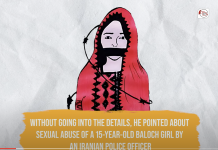Since last year, Balochistan has been grappling with an alarming surge in suicide cases, as the number of tragic incidents continues to rise week after week. Despite the severity of the situation, both the Government of Balochistan and human rights groups have remained conspicuously silent, leaving the affected communities to bear the burden alone.
Suicide, often considered a taboo subject, is met with negative perceptions and hushed discussions within society. Instead of addressing mental health openly, the issue is buried under stereotypes, with many still regarding mental health problems as trivial or as a sign of weakness.
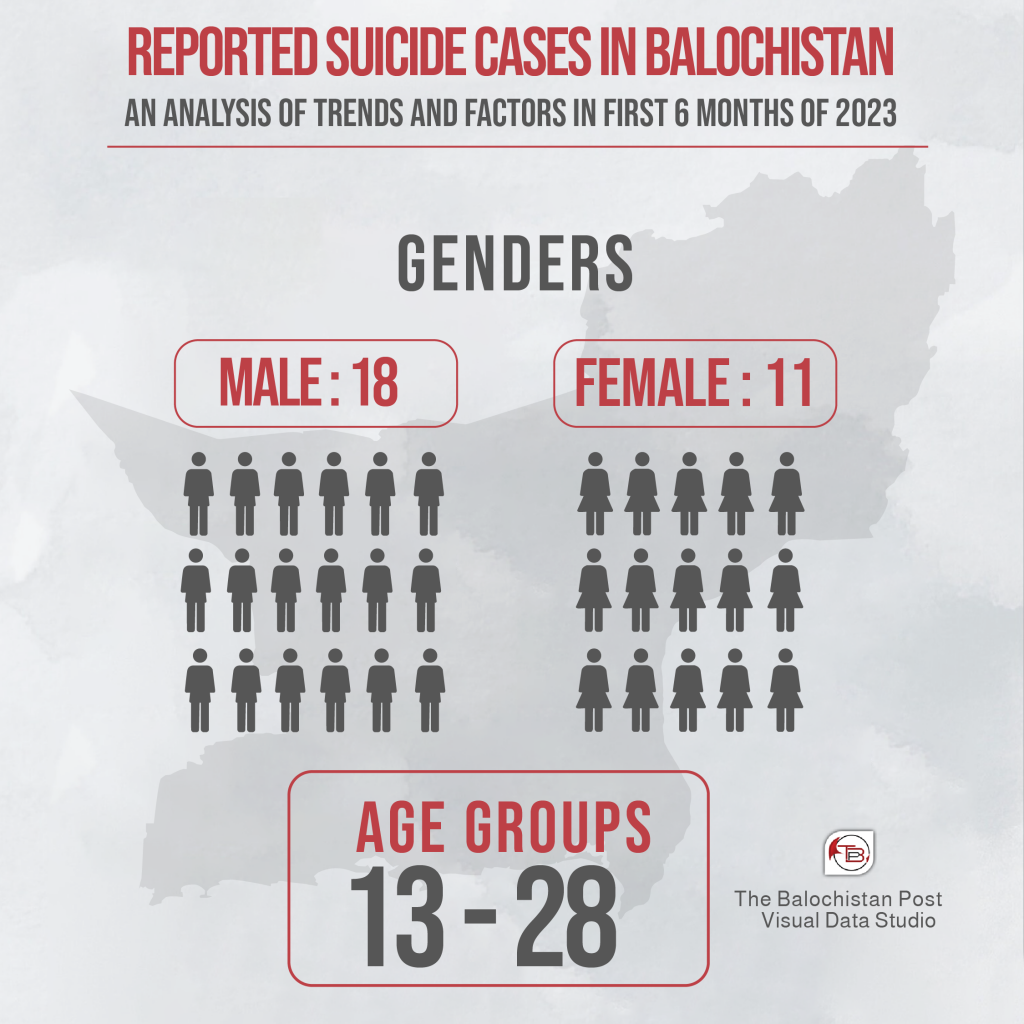
According to data collected by The Balochistan Post, a total of 29 suicide cases have been reported in Balochistan since the beginning of 2023, with 11 women and 18 men falling victim to this tragedy. What’s concerning is that all the victims were aged between 18 and 28, raising serious concerns about the young population’s mental well-being.
The infographic designed by TBP’s visual studio shines a light on this distressing matter, revealing that approximately 0.135 suicides occurred per 100,000 people every week.
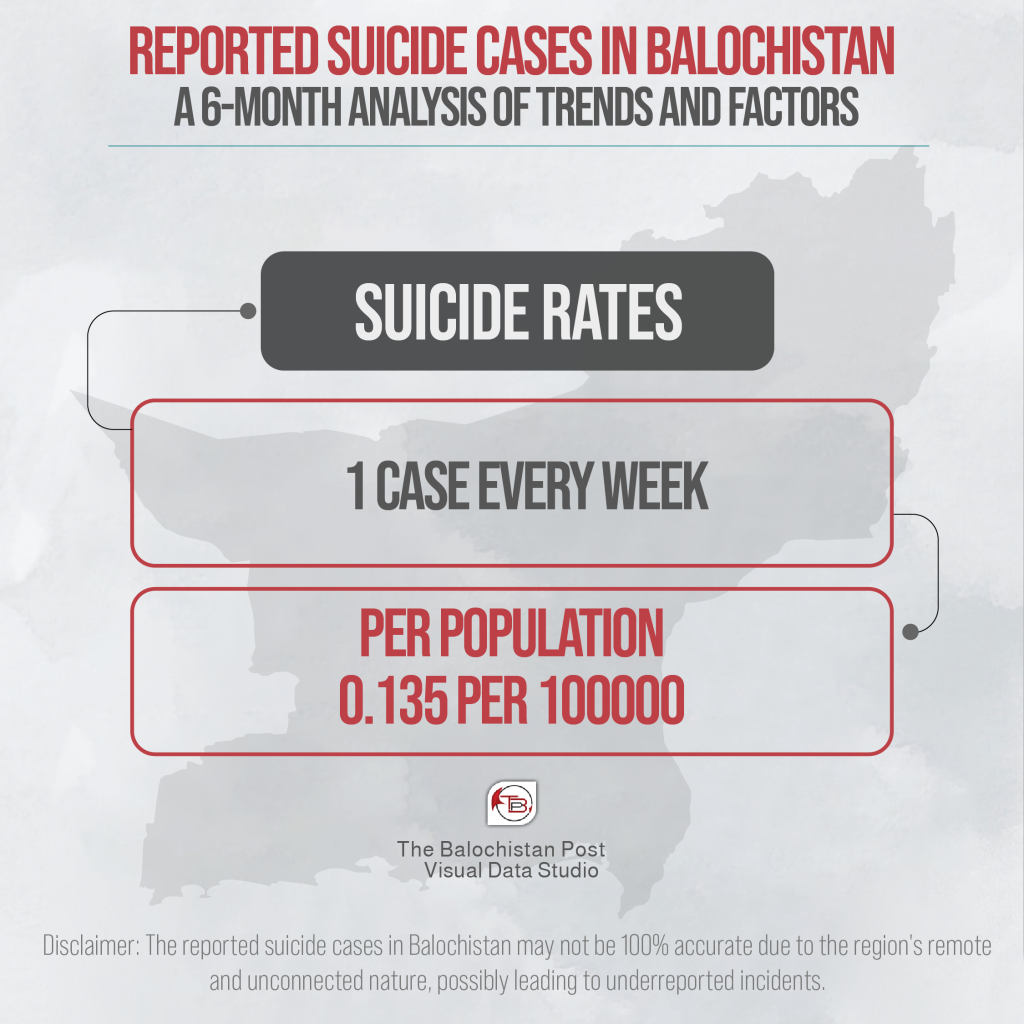
The methods employed by these individuals to end their lives varied, with 12 choosing hanging, 4 opting for shooting, and 2 using acid or poison. Additionally, 10 cases remain mysterious with unknown means.
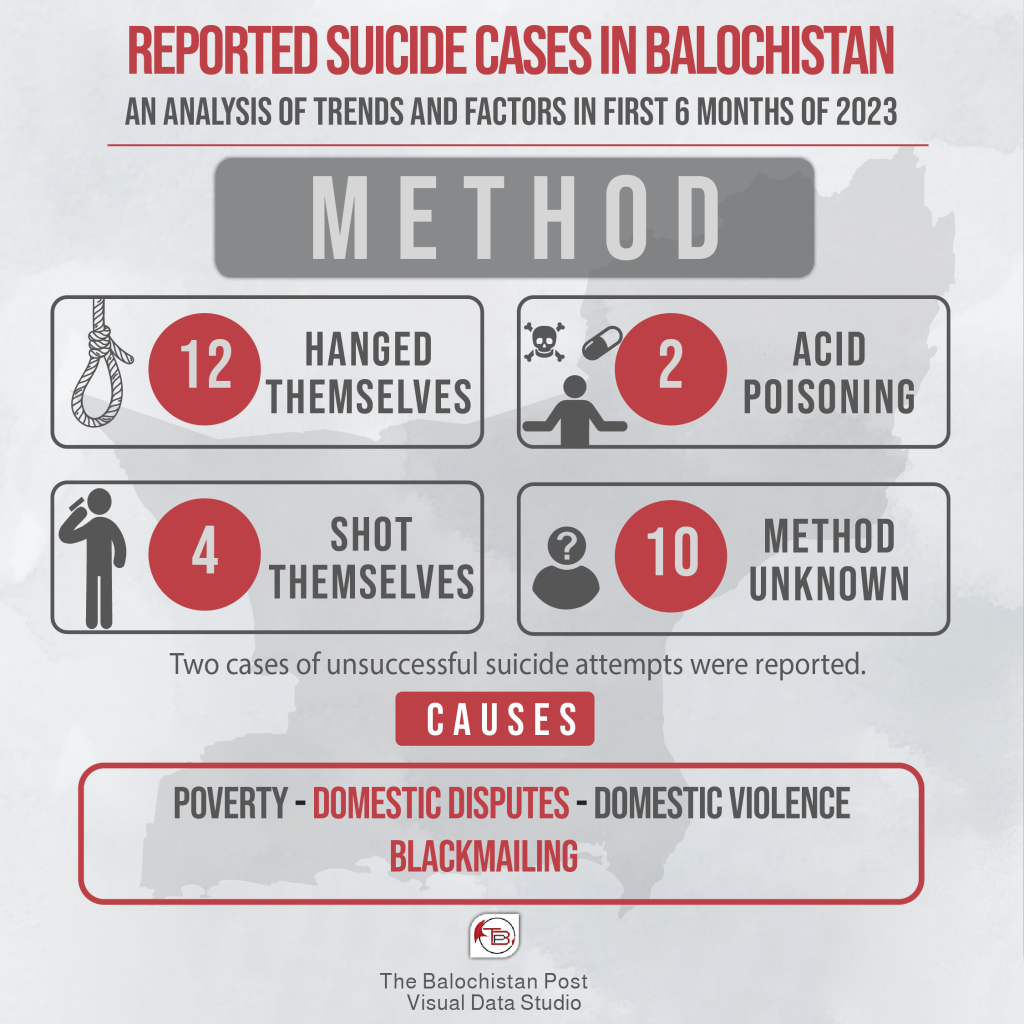
The reasons behind these tragic acts are multi-faceted, ranging from poverty and domestic issues to the blackmailing tactics of influential figures who enjoy support from Pakistani security forces.
The most affected areas in the past six months were identified as Gaddani, Hub Chowki, Kohlu, Noshki, Quetta, Turbat, Chaghi, Dalbandin, Kachi, Kech, Khuzdar, Panjgoor, Awaran, Dera Bugti, Dakki, and Gwadar.
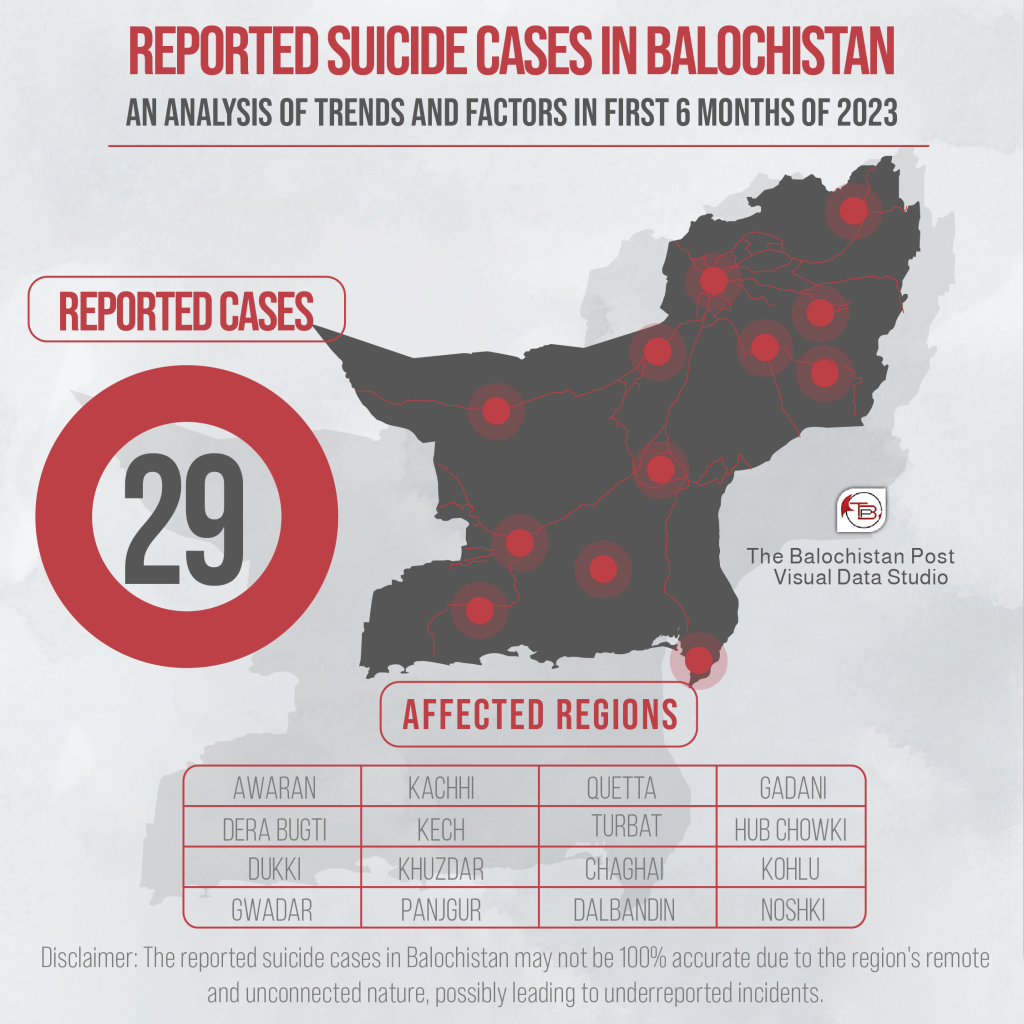
Investigating the rising suicide rates posed significant challenges for The Balochistan Post, as many households denied the incidents when approached, masking the actual severity of the problem. Moreover, in remote regions, the lack of cellular signals hindered efforts to reach out to potential sources.
Unemployment, poverty, and mental health issues emerged as the leading factors driving individuals to take their own lives, indicating the urgent need for comprehensive support systems.
However, it’s crucial to acknowledge that the reported incidents may not represent the full scale of the problem, as underreporting in far-flung areas remains an obstacle in gathering accurate statistics.
The rising suicide cases in Balochistan demand immediate attention and collective efforts to shatter the silence surrounding mental health and create a society where those in distress are heard, supported, and given hope for a brighter future.

























